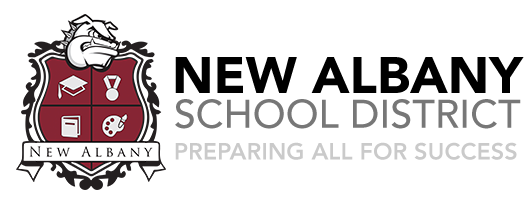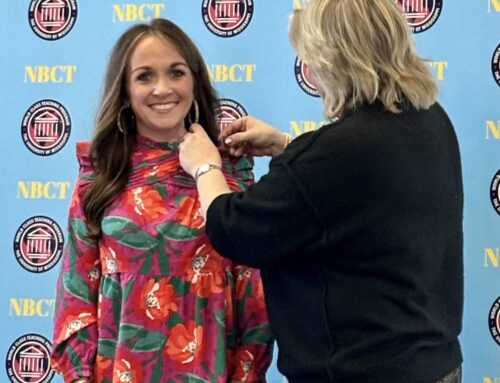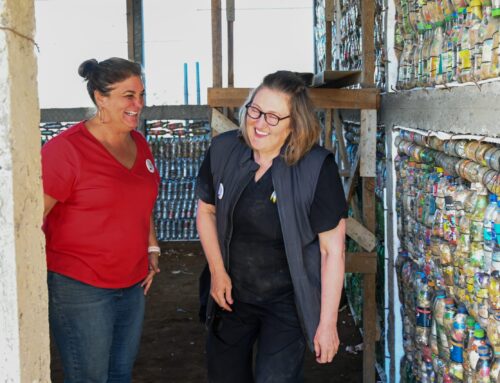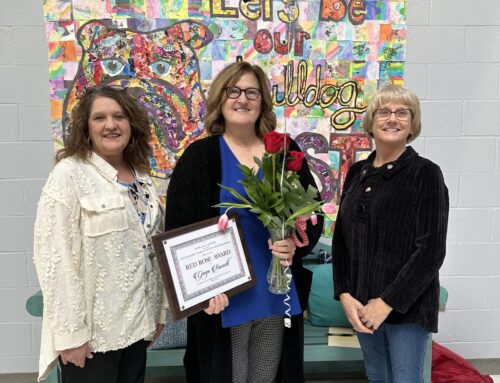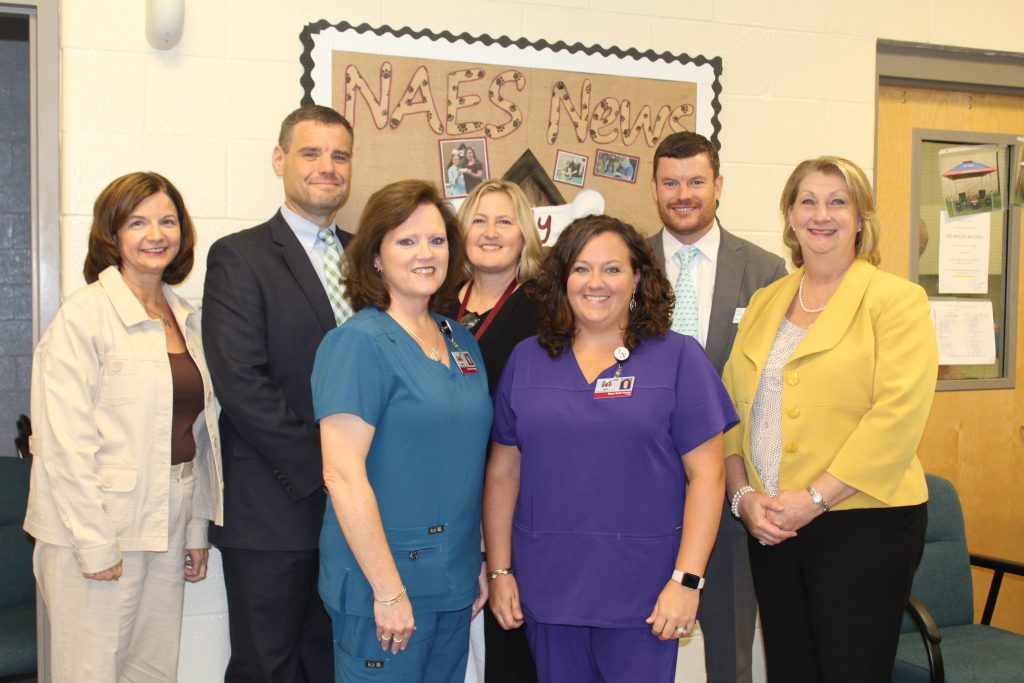
Pictured front row l-r: Tammie Reeder, Health Services Coordinator – New Albany School District & Mary Beth Hardy, NAES School Nurse; back row l-r: Dr. Becky Waterer, Vice President of Medical Affairs-Magnolia Health; Lance Evans, Superintendent of Schools – New Albany School District; Gwyn Russell, NAES Principal; Dr. Jeremy Erwin, Chief Medical Director-Magnolia Health; Mary Anna McDonnieal, Director of Marketing & Communications – Magnolia Health
New Albany Elementary School (NAES) is pleased to be a part of the TeleHealth Pilot Program for the 2018-2019 school year. This pilot program is funded and sponsored by Magnolia Health.
Telemedicine uses a secure, two-way video/audio link between the school and a local physician to provide acute health services to the student. Equipment is operated by the school nurse and it sends images and sounds to the health care provider. Current local pediatric providers who are partnering with NAES for this pilot program are Dr. Brad Scott with Creekmore Clinic and Drs. Shane Scott and Eric Harding with Internal Medicine and Pediatrics.
It should be noted that privacy of students will be upheld to the highest standards and the school will always communicate with the parents regarding upcoming appointments, information discovered during the telehealth visit, and printed physician treatment plan after the visit. School nurses will work diligently to insure privacy of students and detailed communication to the parents.
Tammie Reeder BSN, RN, NCSN, the Health Services Coordinator for the New Albany School District and one of the School Nurses at NAES, is the site coordinator for the pilot program. She has been working on implementing this program since April 2017 and hopes that students will be able to use the services in October.
Reeder explained that she has two main goals for this program:
- To connect students who do not have a primary care provider with a local physician and clinic; and,
- To help students who need regular medicine and routine follow-ups to be able to have their visits through the TeleHealth Program; thus, helping keep students at school and providing parents the ability to remain at work with no lapse in medical treatments for children.
Reeder did explain that this service will only be available two days per week for a set period of time and will not be used for students who present with symptoms such as fever and vomiting. Those ill students will not be allowed to stay at school so a parent would be called to pick them up.
“This program is perfect for so many of our students,” she said. “For example, a student who has asthma may be able to use TeleHealth to have routine follow-ups with health care providers so that they can keep their maintenance medications and inhalers current. Availability and consistency of maintenance medication helps to prevent asthma flare ups.”
Students received information and consent forms regarding the program at the beginning of school. Reeder said that parents have shown great interest in the program. In fact, of the approximately 1,100 NAES students, around 800 students have consent forms on file. She did explain that there will be some additional follow-up paperwork that will have to be done between the parents and participating clinics before the program goes live later in the semester.
Dr. Jeremy Erwin is the Chief Medical Director for Magnolia Health and is working closely with Nurse Reeder, local physicians, and school officials to implement this program. Erwin explained that Union County has been identified as an area with a very high rate of utilization of emergency rooms for children with non-emergent conditions which raised the concern for the possibility of a lack of access to primary care and lack of personal medical care providers for children.
“Magnolia Health is excited to support this innovative pilot program to increase access to primary care for children. New Albany was selected due to the strong, local support of the physician community and the local schools. This new solution has the potential to provide needed care, establish relationships between children and providers in the local community, increase school attendance, and keep parents at work,” Erwin said.
